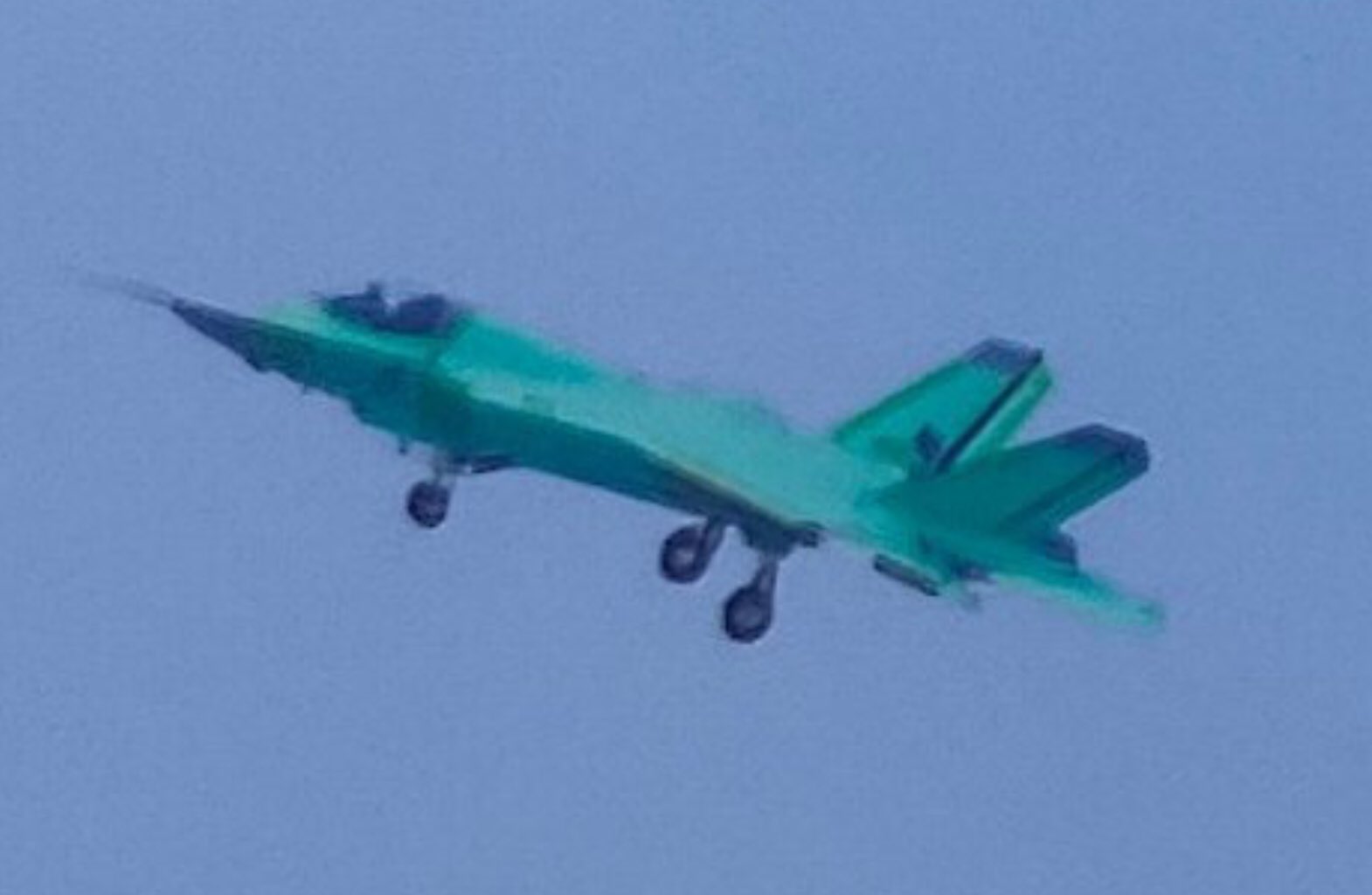China has been aggressively ramping up its Navy including fighter jets that would operate from its aircraft carriers. Recently, the Chinese People’s Liberation Army Navy (PLAN) tested a new carrier-capable stealth aircraft and experts believe they could be a powerful addition to PLAN.
Although details remain shrouded in secrecy, it is believed that the aircraft is a derivative of the FC-31 (J-31). Experts have speculated that it could be called J-21 or the J-35. The base J-31 platform is the second stealth fighter in China’s inventory, the first being the J-20 ‘Mighty Dragon’.
The first prototype of the FC/J-31 made its debut at the 2012 China International Aviation & Aerospace Exhibition, following which another prototype was developed. The latter came with smoother lines and a redesigned wing-tail configuration.
The FC/J-31 varies greatly from the J-20 with the latter being much larger in size. The J-20 has forward canards while the FC/J-31 does not. Unlike the J-20, the FC/J-31 has a conventional airframe.
The J-31 was initially believed to be meant for export. It was seen as China’s way of offering a cheaper fifth-generation fighter jet to customers who could not afford the super-advanced American F 35 Lighting II Joint Strike Fighter (JSF).
Initially, there were rumors that the J-31 was based on the technical design allegedly stolen from the Lockheed Martin F-35 given China’s dubious records of using espionage as a tool to access sensitive foreign military hardware to further its own defense research and development.
Both the FC/J-31 and the F-35 have similar forward fuselage sections, including the stealth contoured nose chine and engine intakes. However, these resemblances could be a mere coincidence as China has not been officially charged with stealing F-35 technology.
FC/J-31 Vs F-35
The operational capabilities of the carrier-borne J-31 are a closely guarded secret. However, analysts are certain that it’s a fifth-generation, multi-role, twin-engine stealth fighter. The aircraft is the brainchild of the Shenyang Aircraft Corporation, an affiliate of the Aviation Industry Corporation of China (AVIC).
The aircraft has an overall length of 16.9 meters and a height of 4.8m. Its wingspan is 11.5m and can cruise at a speed of 2,200 kilometers per hour with a maximum takeoff weight (MTOW) of 25 tonnes.
The J-31 was designed keeping in mind advanced defense capabilities in close-air support, aerial bombing, and air interdiction operations. The stealth fighter can also perform suppression of enemy air defenses (SEAD).
The F-35 Joint Strike Fighter (JSF) is a stealthy, supersonic multi-role fighter developed by Lockheed Martin for the US Air Force, Navy, and Marine Corps besides the program partners from the NATO and US allies. The F-35B Short Takeoff and Vertical Landing (STOVL) and the F-35C Carrier Variant (CV) are the two naval variants of the aircraft.
The F-35B is for operational use by the USMC, Royal Navy and Royal Air Force while the F-35C is designed keeping in mind the US Navy’s operational requirements.
The F-35B STOVL sports a wingspan of 10.6m while the F-35C has an overall wingspan of 13.1m. The former has an overall length of 15.4 meters while the latter is 15.5m in length.
The F-35s are powered by P&W F135 Turbofan Engines and boast an MTOW of 27,216 kilograms with 164.6 kilonewtons worth of thrust and can cruise at Mach 1.8 speeds.
The American stealth fighter is armed with two AIM-120 Advanced Medium-Range Air-to-Air Missiles (AMRAAM) along with two 1,000 pound Joint Direct Attack Munition (JDAM) precision air-to-surface munitions. The F-35A and C variants are armed with a 27-millimeter gun.
Read More
The New Chinese Jet
Photographs indicate that this carrier-capable J-31 is a major upgrade from its predecessors. Some core features identified by National Interest’s Caleb Larson are the far larger and more robust pair of wheels to support the stresses of carrier operations.
The pictures reveal a catapult launch bar, a clear indication of the aircraft’s carrier landing capabilities. The folding wingtips and tail tips are also indicative of its carrier operations.
Long-term observers believe that the timing of this carrier-capable J-31 coincides with PLAN’s Type 003 aircraft carrier, which is supposed to be China’s third carrier designed as part of its 2035 naval vision.
This aircraft carrier is likely to be ready by 2022 and enter operational service by 2024. Observers have drawn comparisons with US Navy’s enormous Gerald R. Ford-class carriers.
The War Zone highlighted that a naval variant of the J-31 was pictured inside a land-based facility in Wuhan, China. The J-31 model was next to a mock aircraft carrier which Beijing uses to evaluate an aircraft’s potential carrier-based capabilities.
The report indicated that it was representative of the upcoming Type 003 carrier and cited an annual report on Chinese military developments that the Pentagon sent to Congress in 2020 which read, “Development continues on the smaller FC-31/J-31 for export or as a future naval fighter for the PLAN’s next class of aircraft carriers”.
According to the report, the aircraft could be designated as J-21 or J-35. This development seen in conjunction with China’s recent bomb test is indicative of its intentions to assert naval supremacy in the Indo-Pacific.
- Aritra Banerjee is a defense journalist who has worked in both online and print media. He has laid an emphasis on issues related to military human resources, tactical psychology, military-media relations, professional military education, and combat fitness. He can be reached on email: aritrareporter@gmail.com.
- Follow EurAsian Times on Google News
